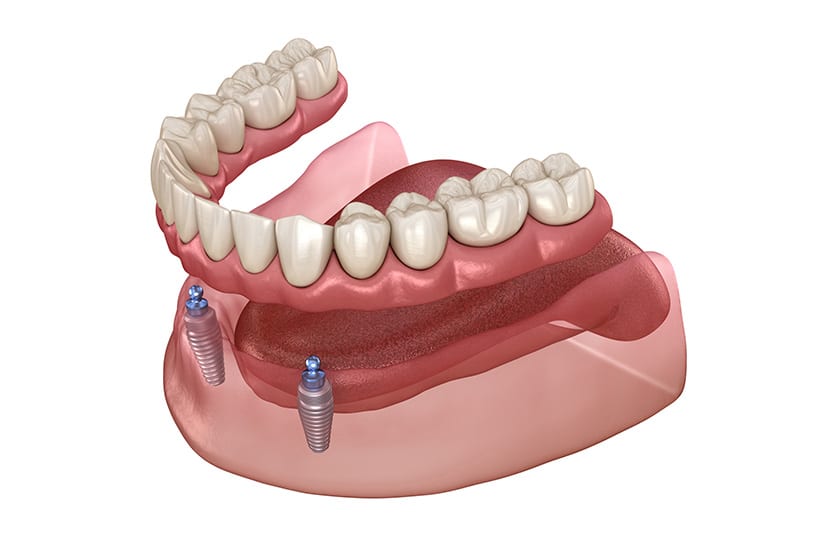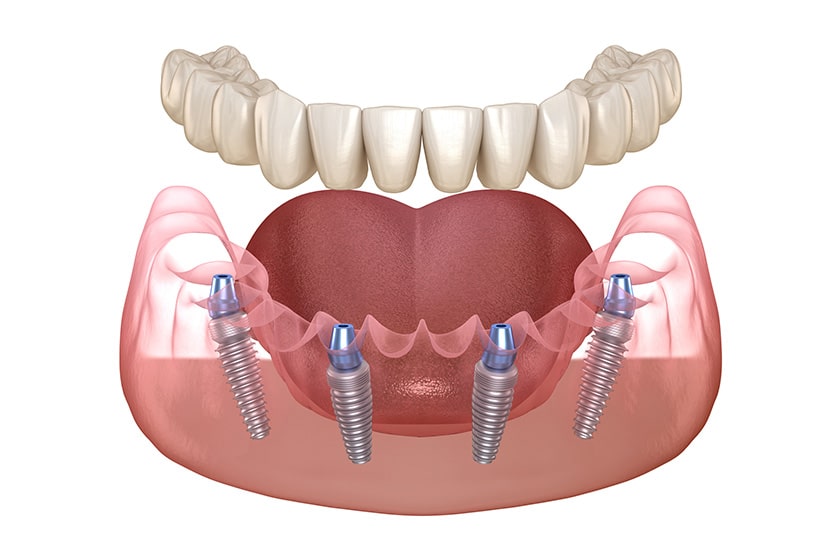Dental Implants
Implant Dentistry
Implants are made of either commercially pure titanium or its alloys. Titanium is considered to be one of the most biocompatible (body-friendly) materials in medical use today. Implant surfaces are usually treated (altered) to make it micro-porous so that the bone grows over it better and faster Implants come in different sizes (lengths and diameters) and shapes, personal anatomical differences determine the size/shape of implants that we use.
To determine, measure, and visualize the anatomy we take a special X-ray called CBCT (CT Scan for dental purposes); that’s the gold standard in implant practice these days. We use two different flagship implant companies: Nobel Biocare (Sweden) and Straumann (Switzerland).

Single dental implants for missing teeth

Implants to support dentures, known as overdentures: 2 to 4 implants.

All-on-X: 4 to 6 implants to replace all teeth with a ceramic bridge
Implant Procedures and Timeline
Implants can be placed either free-hand with no guides or guided with a special device to guide the implant into exactly the place you want. The latter is considered preferable if conditions allow. Use of special equipment is required to produce the guides. There are a few different timelines for implant placement:
Immediate Placement: It can be placed right after the tooth is taken out if the space isn't too large and the implant can be screwed in.
Delayed Placement: It can be placed after the bone heals within a few months after the extraction.
After the implant is put into the bone, there’s usually a period of 2.5-4 months before we attach a crown to the implant. This time is needed for the implant to integrate, meaning ‘take in.’

